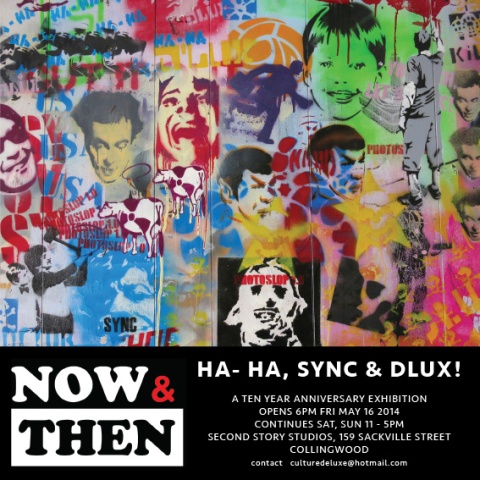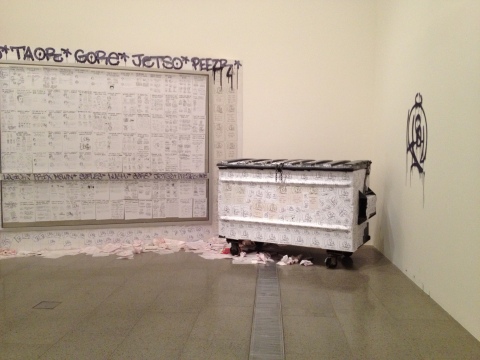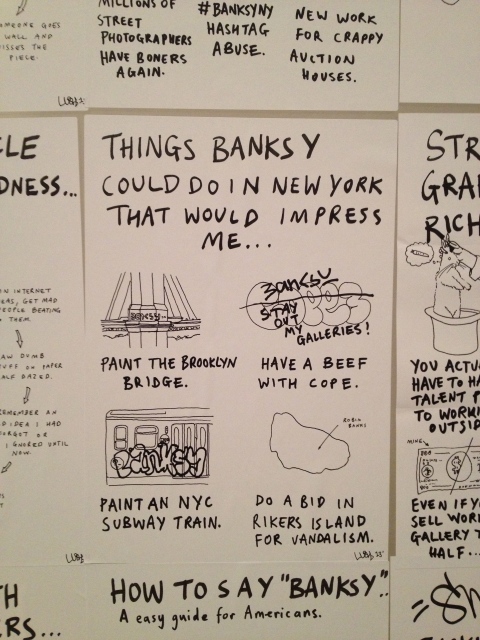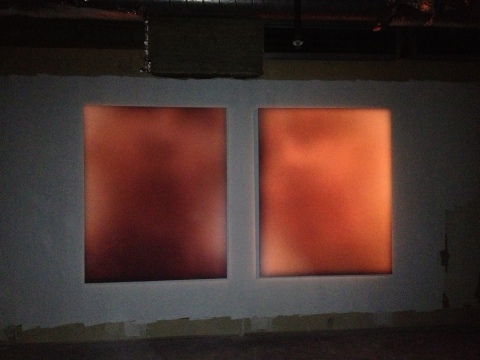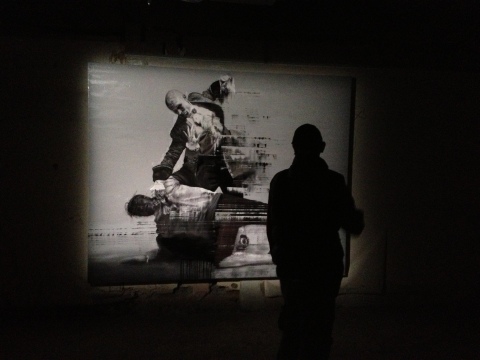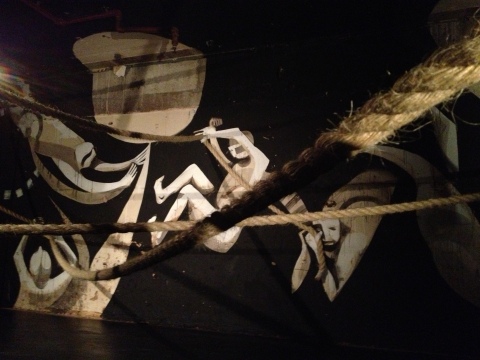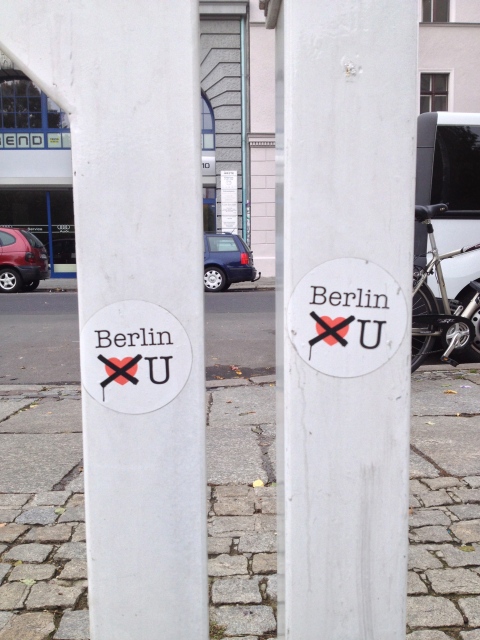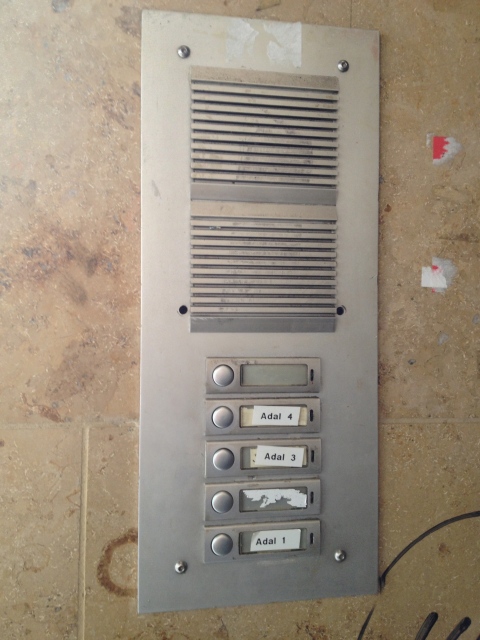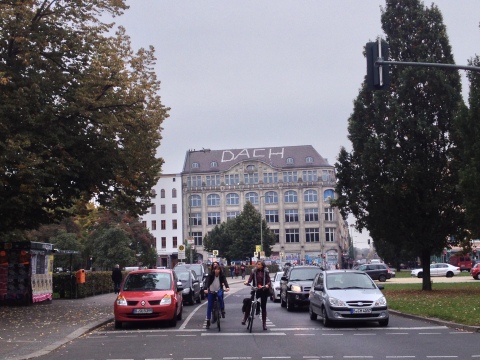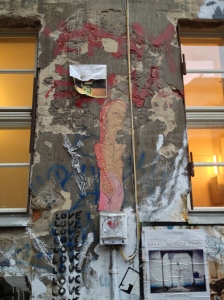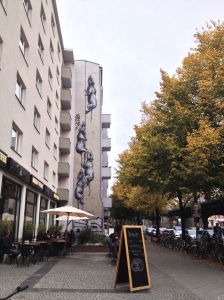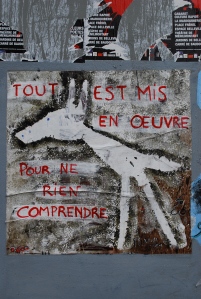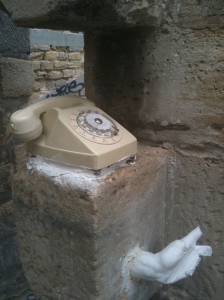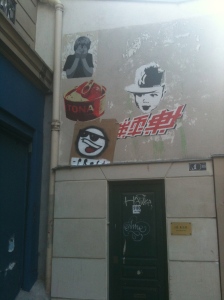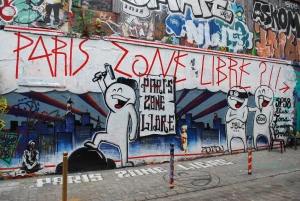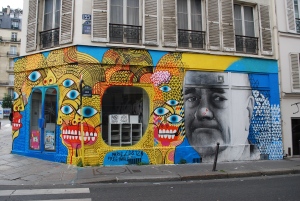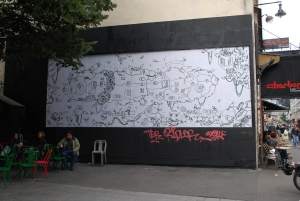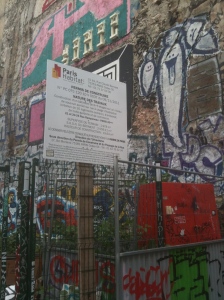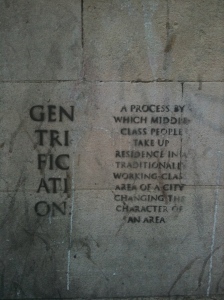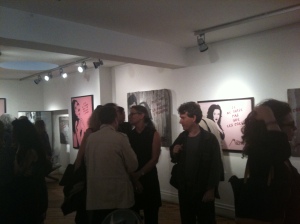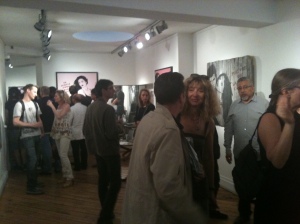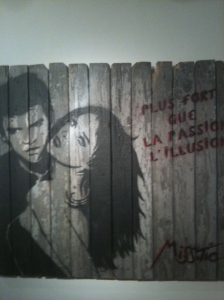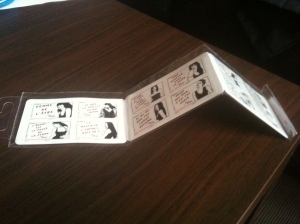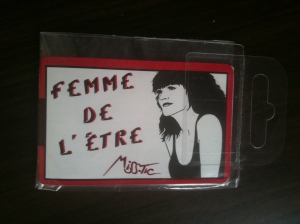Old times, new times….
This site doesn’t normally do announcements about upcoming shows, as you will know if you have visited it before. But sometimes I like to put up information about a show that promises great things or is by artists who are really significant in the scene. Here’s some info about a show that starts May 16th that will deliver or both fronts.
If, like me, you have been following the graffiti and street art scenes in Melbourne for a long time, you will be thrilled to hear about an upcoming exhibition that celebrates the history and longevity of some of Melbourne’s most significant artists of the last decade – Ha-Ha, Sync and DLux. These were the names that helped to put Melbourne on the global map of significant street art centres. All three are still in the art game, and it’s fantastic that there is a show celebrating both the old times, and the new times, for these artists – and for Melbourne’s art.
And now….. Melbourne Now
This weekend sees the opening of Melbourne Now at the National Gallery of Victoria, perhaps one of the most significant initiatives by an Australian museum in many years, in that it showcases hundreds of works made by artists associated with Melbourne (living here, working here, born here, or representing some idea of Melbourne in their work…). Here’s the website:
The show is significant for its scale: hundreds of works selected by thirty curators, situated in over 8000 square metres of exhibition space spread across the two sites of the NGV and with a number of off-site locations in the city. It’s significant also for its broad-ranging interpretation of ‘creative Melbourne’, bringing in to the gallery spaces an impressive range of art practitioners. By this I mean not just a diversity of artists (sculptors, print-makers, video artists and many more), but also architects, designers and performers (the exhibition includes elements such as dance – perhaps a first in any Australian museum).
The exhibition also continues the NGV’s refreshing willingness to categorise street art as a valid and interesting art form. In July of this year, the NGV hosted ‘Suburban’, a solo show of new work by Ian Strange, also known as graffiti writer Kid Zoom, and has also temporarily exhibited work by Melbourne contemporary artist Miso, known for her many years of working in the street as well as in galleries. Such initiatives have been impressively open-minded for a major museum, but it would have been easy for the gallery to have left street art out of Melbourne Now. Instead, the exhibition includes two artists well-known for their work in public space. Ash Keating, who came to public attention in 2004 when he painted the hoarding over the Mockridge Fountain in City Square using a paint-filled fire extinguisher, is represented through two works: one is the stunning video work, ‘West Park Proposition’ which shows, on three screens, his transformation of a blank concrete wall into an artwork that blends harmoniously with its outer Melbourne setting. The other will be located on a billboard hung on the outer wall of the NGV itself, and Ash will paint the billboard on Friday 22 November, prior to the exhibition’s opening on 23 November. So the gallery makes itself into a wall that can be draped with artwork being created before the eyes of the public – a gesture that seems to represent in a really positive way some of the fundamental ideas underlying street art.
Some more of those ideas can be found in the work of Lush, the other ‘urban artist'(to use the gallery’s term) included in the show. Lush has created an installation that fills half of a small room, and comes with its own dumpster and piles of litter:
It’s worth spending time reading the dozens of stickers and sheets of paper that cover the surfaces of the installation, with shout-outs to Peezr, Sofles and Jetso included as well. If you follow the blog Vandalog, you will have come across contributions by Lush, and you can find many more in the NGV’s installation:
I walk down Brunswick Street every few days, since I live nearby, and there’s a shopfront and doorway entirely covered with Lush stickers. I love it that this installation is almost the same as that shopfront in the streetscape. Both Lush’s installation and the exhibition curators are thus posing a question to us: ‘graffiti doesn’t belong in a gallery?’. There’s no right answer to that question, but it’s worth thinking through….
Finally, the other way in which the NGV is building its reputation for supporting street art, is through its endorsement of All Your Walls, a community-organised re-paint of Hosier Lane, and Rutledge Lane, located opposite one of the NGV sites. The exhibition catalogue for Melbourne Now lists Hosier Lane as one of the locations for the exhibition beyond the main gallery sites. A decade ago – or even five years ago – it would not have been possible to have imagined a major museum associating its name with a site known for illicit art. (And although some museums, such as the National Gallery of Australia and the Tate Modern among others have had exhibitions showcasing street art and graffiti, this is a little different. First of all, Ash Keating and Lush are included within the line-up of exhibiting artists on the same terms as any sculptor, fine artist, architect or designer. Their art practices are =regarded as being just as valid as any of the more conventionally respectable ones. And in sponsoring All Your Walls, the gallery is acknowledging that Melbourne’s art exists within the cityscape as much as in the galleries and studios of the city. It’s a gesture that says clearly that street art is part of Melbourne – part of Melbourne now.
Brutal…..
I’m spending a few hours hanging out where there’s some free wifi and hoping to upload another post before I have to head to the airport.
I had intended to post something further about Berlin (there are actually a few posts I’d like to write) but I decided instead to post some photos from an exhibition I was lucky enough to get to see here in London.
‘Brutal’ is a group show organised by Steve Lazarides and the Vinyl Factory, scheduled to run during London Art Week, as with previous group shows over the last several years. For each of these shows Lazarides selected sites outside of gallery space, sites that enhance the ‘urban’ dimension of the artists or artworks that he includes. This year’s show is no exception to that, located at 18 The Strand, a disused office building. the building is next door to Kings College and on one of London’s busiest thoroughfares, but once inside, the noise and bustle disappear, leaving the visitor in a space filled with shadows, plaster dust and silence.
Most of the exhibition takes place on the basement level, but at ground floor, there is a room filled with and assortment of artworks, including by JR, Faile and Blu, and another large space containing a three part set of murals by Dal East. Here’s a shot of two of the walls:
The paint is applied directly onto walls that are peeling and eroding, which results in an amazing textural quality to the artwork:
After these two rooms, the exhibition moves downstairs and all natural light is left behind. Downstairs, it’s impossible to know what time of day or night it might be outside (that partly explains why, at the opening preview, people stayed in the building for hours with little sense of time passing…). The space is vast, and, after an initial brightly lit area filled with glass sculptures, extremely dark. (It is actually so dark that reading the didactic text about the artworks is well nigh impossible, requiring the torch facility on my smart phone). Here’s a small selection of what is hidden in the shadows:
Two glorious pieces by the Miaz Brothers, hanging on a distant wall within the basement. As you approach, the orange glow increases, until you confront two Rothko-like, floating canvasses. The works are painted on canvas, and shadowy, blurred faces can just be made out within them:
Some of my favourite painters are included. Here’s Conor Harrington’s piece:
And there is an entire room painted by Lucy McLauchlan. Lucy’s work is often intensely decorative; here, the piece retains that sensibility but a harder edge has been added through the installation of rope and the claustrophobic atmosphere of the room through which the figures swing. You can climb under the ropes to view the walls from all angles, and the ropes add new sightlines within the space….
There is a lot of video work in the show. Doug Foster’s massive installation, ‘Moonland’, with its endlessly swirling black and white shapes. Todd James’s ‘Brutal Animation’, which many seemed to love, but which left me pretty indifferent: I wished there had been a better display of the work, and perhaps a more elaboration installation built around the video, allowing James’s paintings to be included as well. And there’s ‘Survivor’ by Karim Zeriahen, a three-screen installation, which packed quite an emotional punch, and which culminated in shots of the room in which it is installed, thus mirroring the space of the artwork with the space in which the spectator is standing:
In addition to these, you could wander into a room filled by Mark Jenkins’s sculptures (and if you were lucky, discover the one hidden in a pile of rubble near the Todd James video piece), you could be tormented by gas mask-wearing performance artists on bicycles, and you could eat miso soup supplied as part of Brad Downey’s installation, ‘Tarpaulin Cafe’. I made two visits to this show, and I still think I didn’t find all of the artworks that may have been hidden away in the shadows. Both times, i spent much longer in the space than I imagined I would. Both times I found artworks of great beauty and skill (along with some that left me less enthused). I haven’t been to any of the previous group shows, so I leave it to others to debate whether this one is ‘better’ or ‘worse’. Whatever, it’s an undoubtedly fascinating experience.
Berlin’s visitors (part 2)
I first visited Berlin a few years ago, and, like so many people, I was struck by how many people pass through the city, attracted by its aura of easy-going coolness. Some are tourists, some are artists,some are backpackers who appreciate the low cost of living, some are academics…Berlin is like a nodal point in the flows of people in and around Europe: most people, at some point, travel to Berlin and fall in love with something about the city.
Like so many, after i visited, I wanted to return, and did so this month. I was struck all over again by Berlin’s coolness and relaxed creativity, but I also thought that something had changed. There is now a more noticeable sense of tension in relation to the many visitors who flow in and out of Berlin. This manifests in various ways. Local residents told me that there is a lot of tension in gentrifying areas, where bars and backpacker hostels have opened up, with residents repeatedly calling the police to complain about noise. Individuals running the various walking tours around Berlin neighbourhoods report that locals often make angry or aggressive comments as they pass by (and this happened to the ‘street art walking tour’ that I went on, as we walked through Kreuzberg). Visitors, whether tourists or outside investors snapping up cheap property, are seen as key contributors to the gentrification process, which results in rents going up for locals and communities either fragmenting or being displaced. there is perhaps a little less warmth towards visitors in some areas than there might have been a few years ago, especially in those areas where gentrification is actively underway.
There’s lots more to say in relation to the complexities of what’s happening in Berlin, but it’s interesting here to look at the various visual traces of the tensions around ambivalence (or sometimes even antagonism) towards those who visit Berlin.
Here’s a tour group, being introduced to the enormous Victor Ash mural in Kreuzberg. The guide was earnestly explaining to the tourists that having this mural on the building will increase the building’s value.
All around Berlin, you can find these stickers, revisions of the ‘I heart Berlin’ (or New York or London or wherever) tourist cliché. They read ‘Berlin Doesn’t Love You’. These ones are located right next to the Victor Ash mural, a site at which almost every walking tour will visit.
Another sign of the ways tourists make problematic incursions into the city: property investors buy up all or most of the apartments in a building and rent them to tourists/ short-term visitors. The names of individuals next to entry bells disappear; instead all you can see here are the agency codes for each apartment. Previous residents will have been bought out; any community within the building has been destroyed.
And here’s a beautiful building in Kreuzberg: the one with ‘DACH’ rollered onto its roof (which is funny because ‘dach’ means ‘roof’ in German. It is dilapidated and empty right now but has been bought by a foreign investor and will be turned into a boutique hotel:
As part of the investor’s control of the space, the facade is now rented to approved advertisers, whose ads are taped on to the outer hoardings, with tape proclaiming that unauthorised additions will lead to prosecution. Sigh.
At the same time, of course, since spaces can never be entirely tied down in the way the company obviously hope, various individuals have added tags and other ‘unauthorised’ images. You can see a pasted-up poster that speaks of ‘reclaiming our city’ and you can see a lot of these political posters, protest slogans and anti-gentrification graffiti around the city. So, like all cities, Berlin is in flux, undergoing change. But the ways in which it is resisting and contesting those changes are writ large on the surfaces of the city.
Berlin’s visitors (part 1)
As mentioned in the previous post, I have been in Berlin recently. I spent ten days there researching a bit of what’s happening in the street art scene there, with a particular interest in the ways that neighbourhoods associated with street art are starting to change: this can be called gentrification, and such a term certainly covers some of what’s going on, but there are also other features to the social changes taking place (one of which is called ‘touristification’, and more on that another time).
It’s three years since I was last in Berlin, and much has changed, while other aspects were pleasurably familiar. In 2010 I was struck by how many artists from outside Berlin visited, drawn to its creative scene, and sometimes stayed on, becoming more than a visitor.
Anyway, during my visit there, ‘residence’ was a frequently occurring theme: who lived in which neighbourhood, for how long, what made someone a ‘real Berliner’, and what effects the many thousands of visitors per year have on Berlin’s identity, income, and atmosphere. I felt very conscious of my visitor-status there, and a little more uncomfortably self-conscious than in the past.
But the conflicts and tensions around Berlin’s many tourists and visitors is a topic for a later post. For now, here are some of the works left by Berlin’s recent visitors to its streets.
Here’s a piece by Alice Pasquini (with addition!) on the Oberbaumbrucke:
Dscreet and Reka, in the Haus Schwartzenberg courtyard:
Same location, lovely piece by Cake:
And Roa, on Schonhauser Allee in Prenzlauer Berg:
I’ll write more about the tensions around ‘visiting Berlin’ later….
End of radio silence!
Another long gap between posts…
I have been writing and editing and re-editing my book on street art, law and the city, and, as I have mentioned before, whenever I am immersed in academic writing I find it hard to switch my brain into blogging mode.
I’ve also done a year’s teaching, compressed into the months between April and August.
And I’ve been travelling: I spent 3 months in London (with trips to Paris and Istanbul), and have been back to Berlin recently, and am currently in London. Much of this has involved fieldwork for further research – this time on the uptake of street art in cultural institutions, the art market, architecture, and so on. More on those issues later.
I’ll post some photos from recent trips soon.
In the meantime, here’s a link to my upcoming book, Street Art, Public City: Law, crime and the Urban Imagination.
http://www.taylorandfrancis.com/books/details/9780415538695/
The publisher, Routledge, like many academic publishers, is bringing out a hardback edition first, with a paperback to follow (in about 8 months). This is kind of frustrating for me, because hardbacks are expensive. So when you click on the link below you will see that the book is pretty pricey. If you feel inspired to order it, you can reduce this hefty price a little by entering the discount pre-order code LAW202013 at the checkout.
I’m excited to see it finally in print; if you read it, I hope you find it interesting.
The Shocks of the New (apologies to Robert Hughes)
It’s always pleasant to be able to revisit places for street art and to be able to see, over the years, how favourite artists are evolving (hopefully). As mentioned in the last post, I was able to see a show by Miss.Tic, an artist whose work I’ve enjoyed for many years. I also went back to several locations that had featured a lot of street artworks in the past – around Belleville, for example, or in parts of the Marais, or near the Canal St Martin – and was rewarded by some interesting new works. here are some of them…..
And some artists whose work I had seen in Berlin in 2010 (Prost, Alias and others) seem to have been visiting recently, and they have put work up, in clusters, all around different parts of Paris:
Every new discovery brings with it a little jolt of pleasure. To walk around a corner and see a beautifully constructed artwork, or to catch a glimpse of something high up on the rooftops – anyone who appreciates street art will be well acquainted with these experiences. But ‘newness’ can also bring shocks that are not quite so pleasurable. For example, as I mentioned, I went to Belleville, a hilly, hectically multicultural part of Paris that is home to Paris Free Walls in the rue Denoyez (which feels rather like Hosier Lane, for anyone reading this in Melbourne). Paris Free Walls organises walls for artists to paint and collaborate on. Here’s a great one, featuring the work of Dode Shillinglaw and Ben Slow on rue Amelot:
Belleville is also close to Le Mur (The Wall), the curated ex-billboard space that features a regular turnover of artists, some well-known, some new.
Here’s what was on Le Mur when I went to see it:
Sounds all good, right? Spaces with a regular turnover of work, some legal, some illegal, street art happily existing within a local community….
And, yes, that’s so, except that when I went to see La Forge, an area that had housed the studios of some fantastic street artists and had displayed some amazing work within its spaces, it was clear that nothing should be taken for granted when street art is concerned (something that I do know, but had forgotten). Two years ago, I visited La Forge, and spent a fascinating few hours with Jean Faucheur and with L’Atlas, both really interesting artists. On this occasion, the gate appeared locked, there was no sign of any access to the studios, and the open space at the front looked semi-derelict, with a whole row of cars parked in it. In addition, there was this:
This is a ‘Permet de Construire’ (Construction Permit), indicating that the site is to be developed. Well, if the housing that results provides accommodation for people in need, then all well and good, I guess. But I;m not sure it will – my suspicion is rather that this is one instance of a dynamic we have seen in cities many times before (Williamsburg in Brooklyn, Fitzroy in Melbourne, the East End of London). Street art is part of what establishes an area as an interesting, vibrant district; gentrification ensues. There’s a vast amount of academic literature on gentrification (and the connection between it and street art is one of the issues my new research will study), but it’s summed up nicely by this stencil, seen when I was in Stokes Croft (an area clearly on the verge of gentrification) in Bristol the other week…
Nothing stays the same on the street; that’s part of its pleasures (unlike museums, which exist more to preserve, or freeze, culture). But sometimes the newness brings little chills with it, especially those moments when you imagine you can see a whole neighbourhood beginning to change. Given that street art is associated as much with rising rents, the exclusion of artists who can’t pay those rising rents, merchandising, ‘hipsterdom’, and commerce as it is with any kind of pure creativity (if such a thing exists), then these moments, imaginary or not, should give us pause.
An old favourite
I arrived in Paris last Thursday night, with just enough time to get to the opening of a new show by Miss.Tic. Miss.Tic is something of a cultural (and countercultural institution) in Paris. She has been making stencils and putting them up for many, many years – probably about two and a half decades.
Her works are tremendously recognizable, because they always feature the same devices: a woman, or a woman and a man together, occasionally a cat or a woman and a cat. The images have a nicely stark, graphic appeal, and accompany a brief line of text. The text, for Miss.Tic, is the crucial thing: she describes herself as a ‘poet’ rather than an artist. the words are carefully chosen, and play on language, using puns, double meanings, and subtle satire. The text often has a feminist overtone, which is then placed in tension with the illustrating image, in that the woman in the picture often assumes poses that are stereotypically provocative. For many years, the woman in the images was a representation of Miss.Tic herself; in later years, she has created a generic female, who appears with a stereotypically ‘beefcake’ male.
Her work is now regarded very highly in French art circles. The show was held in the Galerie Lelia Mordoch, in a very trendy part of Paris. The opening was filled with chic Parisiens, all clutching plastic cups of white wine or Evian, and all desperate to speak to the artist.
When I was in Paris two years ago, Miss.Tic was kind enough to do an interview with me, so I felt brave enough to go up and say hello. She appeared to remember me (‘Ah oui, la petite Australienne’) but there were certainly too many people around to have any kind of conversation. Here are a couple of examples of her work, one inside the gallery and one in the street nearby:
(Sorry for the slightly dubious photographic quality – it was very unclear whether it was OK to take pictures so I was being very hasty, and it’s not the best framed shot.)
Every now and then in Paris, especially in certain areas like La Butte aux Cailles, it’s possible to come across street-based works by Miss.Tic. These are a great pleasure; they seem much more raw than the gallery works (which, by the way, have rather large price tags – many of the works in the current show are priced between 8000 and 14000 euros). Here’s one I saw yesterday:
And here’s one on a gallery door (Le Cabinet D’Amateur, near Ledru Rollin):
And just in case you thought, when I said that Miss.Tic is something of a cultural institution in France, that this was just a figure of speech, check this out:
Miss.Tic’s work has been immortalised on a set of stamps, an indicator that a previously minoritarian activity is becoming increasingly mainstream. But aside from that, I love it. She’s on a set of stamps! How cool is that?
On the road again….
I’m travelling right now. In the last 9 days, I’ve been in London (briefly), Oxford, Bristol, and now Paris. Tomorrow, I’ll be heading back to London, to spend 10 days there. So what’s the reason for all this gallivanting? Over the last four years, as some readers may know, I’ve been researching the emergence of street art as a distinctive cultural practice, and the range of social, cultural, political and legal responses to it. The project has been a comparative one, and I’ve been able to travel to San Francisco, New York, London, Rome, Paris, Amsterdam, and Berlin, to meet artists, collectors, bloggers, gallerists and curators, as well as in my home base of Melbourne. I ended up interviewing 62 artists and over 20 gallerists and other art professionals. I walked many miles in different cities, photographing what was on the walls.
And now I’m in the process of writing up this research. In addition to academic articles along the way, it will be published as a book, tentatively entitled Crime and the Urban Imagination, in 2013 by Routledge. (I just have to write it, of course – no problem!)
One of the things that became clear over the last four years was the increasing interest shown in street art by galleries, museums, graphic design, architecture and advertising, among other fields. It was also clear that the art market was deeply interested in the collectability and marketability of street art. So last year, I applied for funding from the Australian Research Council to extend my research by investigating these developments – to examine what the French sociologist Pierre Bourdieu has called the ‘cultural field’ as it relates to street art.
My application was successful, and the project is now underway. This trip is the first fieldwork trip of the research; I’m also hoping to get to Berlin and the Fame Festival in Grottaglie in September.
So that’s what I’m doing, on the road again. The emphasis of the project is different from the previous research, so I’ve been going to galleries and taking notes on what it’s like to be a spectator of ‘urban art’ as it’s exhibited in gallery settings. But of course there’s the art all around on the walls of the streets, too… So it has meant that I find myself to be incredibly busy – visiting galleries, trying to meet gallerists and dealers, sometimes getting stood up for appointments by said gallerists and dealers (grrr), and always, always, walking, walking, walking. I’ve seen some great things on this trip so far, and a few posts will be following this one. My feet may be aching, but my eyes are happy.
 Leave a Comment
Leave a Comment